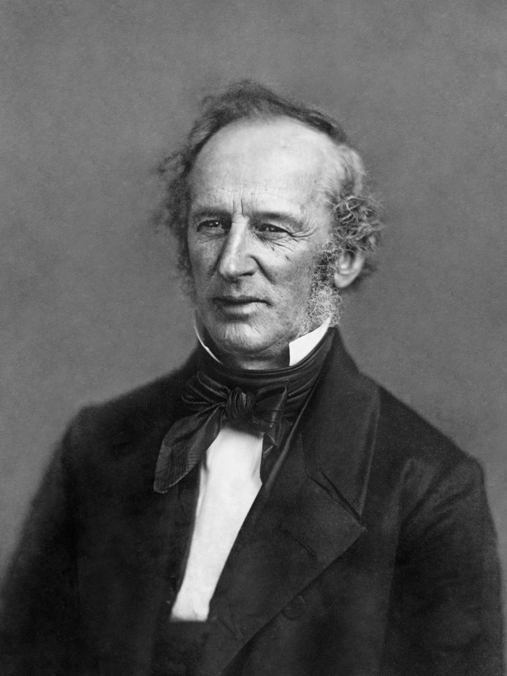The Erie Railroad had been founded in 1833, and eighteen years later connected Lake Erie and New York. Its 483-mile stretch was then the longest in the world.
Vanderbilt was the first of the big-time tycoons but he started as a boatman. When he was seventeen his mother lent him $100 to buy a two-masted barge known as a leriauger and he used it as a ferry. From that he went into water transport. By the age of the twenty-one he had $10,000 in capital and he used it to break the monopoly of the Fulton-Livingstone combine on the Hudson, by operating the unlicensed Bellona. American businessmen often break the law when they saw it as monopolistic. Vanderbilt saw himself as upholding the spirit of the US Constitution in exploiting the comparative liberalism of New Jersey law to break the monopolistic practices of New York State. His pirate Bellona's flag bore the words: 'New Jersey Must Be Free.' The Supreme Court eventually declared the Hudson water monopoly, and the law which made it possible, unconstitutional.
Daniel Drew was born on a farm at Carmel in New York State and like Vanderbilt he started with $100, which he earned as a militia substitute in the War of 1812. After narrowly escaping death by lightning he became a devout Christian. He knew the Bible well and often quoted it.
Americans enjoyed all the advantages of the largest and most modern railroad system in the world. As early as 1859, George Mortimer Pullman, born in New York and trained as a cabinet maker, opened a workshop in Chicago to transform rail carriages into sleeping cars. He founded the Pullman Palace Car Company in 1867, introduced his sleeping cars widely the next year, and built an entire industrial town, Pullman, Illinois. Two years later, automatic couplers and air brakes were introduced. Heavier rails replaced the original pre-steel ones, the entire network was made standard gauge, bridges were built across the Ohio, Mississippi, and Missouri, coal-burning (and, from 1887, oil-burning) locomotives replaced the old wood-burners, and scores of safety devices made travel less hazardous. As engines developed wider fireboxes and became more powerful, with extra drivers to insure continuous running, average speeds increased rapidly, and average train loads grew from 100 tons in 1870 to 500 or more by 1915. Between 1880 and 1916 labor productivity in freight services more than doubled. In addition to dining and sleeping cars (1868), passengers got steam heat in 1881, solid vestibule trains and electric light in 1887, and ultrasafe all-steel coaches in 1904. The investment in modernization, safety, and speed was prodigious.
The innovations enabled the roads to cut average freight rates from 20 cents a ton-mile in 1865 to as little as 1.75 cents a ton-mile in 1900. These have been the lowest large-scale freight rates on earth, and help to explain why freight carried rose from 10 billion ton-miles in 1865 to 366 billion in 1996, one important factor in the nation's huge industrial expansion. By 1916 the rails were taking 77 percent of the intercity freight traffic and 98 percent of its passenger traffic.

